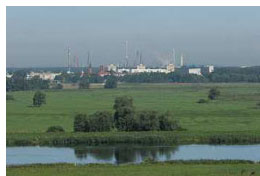|
 On the basis of already existing recommendations of the river basin commissions for the Rhine, Elbe, Oder and the Danube, corresponding checklists were compiled and introduced as checklist method as a result of several consultation projects
organized by the German Federal Office for Environment Protection. The application of the checklists method allows the verification of the compliance by small plants to basic safety precautions and at the same time through its modular structure the verification of extended plant safety precautions of complex industrial plants. On the basis of already existing recommendations of the river basin commissions for the Rhine, Elbe, Oder and the Danube, corresponding checklists were compiled and introduced as checklist method as a result of several consultation projects
organized by the German Federal Office for Environment Protection. The application of the checklists method allows the verification of the compliance by small plants to basic safety precautions and at the same time through its modular structure the verification of extended plant safety precautions of complex industrial plants.
This method was tested successfully in different countries and in different branch of industries.
A resolution was passed by the ICPD in the year 2004 to use this method for the examination and evaluation of plants in all Danube
neighboring states.
For further validation, the method is to be tested in plants of the same industry with different level of technical safety. Technical safety differences can thus be clearly located and be described.
At the same time the method is to be extended for safety-relevant evaluation of refineries.
The recommendations are divided in two parts.
Part 1 deals with the question of safety management system in general.
Recommendations for technical safety requirements on the structure and equipment of production plants regarding the protection of the seas and water are given in part 2.
Apart from the release of substances due to leakages in refineries there is also increase danger of fire-outbreak and explosion. This can lead to a danger for the seas and waters. For this reason, this point will
dealt with in details.
Furthermore, the flare in refineries is a very important safety device which disposes off media in a safe manner via a safety valve.
There are a number of cooling and heating devices in refineries which are going to be dealt with in details here.
The principal requirements always form the basis:
|

